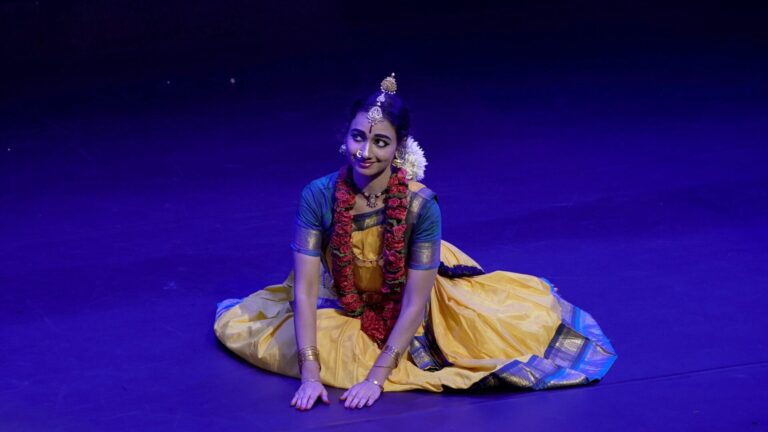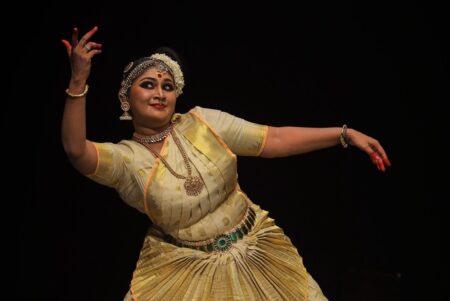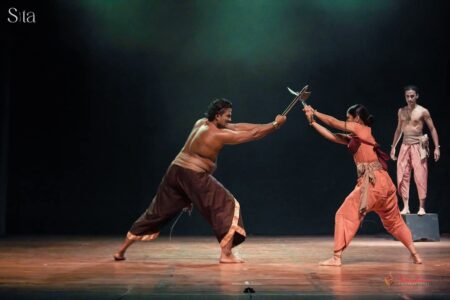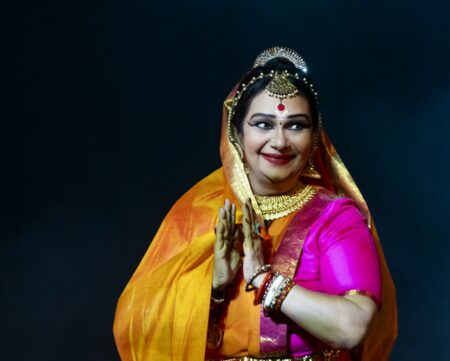Harinie Jeevitha, a rising star in Bharatanatyam, has captivated audiences with her skills and innovation. Trained under Guru Sheela Unnikrishnan, she’s on a UK tour, showcasing her solo choreography ‘Varadaraja Upasmahe,’ and will perform at the INDIKA Festival, Liverpool. She is sharing insights on her artistic journey in an exclusive India Art Review interview.
Many aspiring dancers undergo rigorous training to perfect their skills. However, making the transition from a dedicated student to a successful professional performer demands a distinct skill set. Can you share your experiences and the steps you’ve taken to thrive in the competitive dance world?
Balancing my roles as a student and a performer has been parallel for me. I started training at the age of six, under Guru Sheela Unnikrishnan. We had numerous opportunities to perform as a group even from the early days. In fact, within three or four months of starting my training, I had the chance to play a small role in one of the productions, ‘Balaramayanam’.
I consider myself fortunate to have received such exposure at an early stage. There was a constant motivation for all the disciples to showcase our dance on various platforms from my Guru. I performed my first solo when I was 9 years old. Since then, my performance journey has consistently run parallel to my training.
Can you elaborate on the training methodology of your Guru? How does Sridevi Nrithyalaya mould its performers?
Guru Sheela Unnikrishnan has been actively teaching for more than 35 years. I understand that her teaching methodology has evolved over time through trial and error. She is always a meticulous and hardworking teacher who does not compromise on perfection and strives to extract the best from each student. Right from the beginning, I have felt that her mere presence can inspire a student to give their best. She pays attention to details, focusing on nuances, and exhibits great patience in ensuring each student achieves perfection. This is her technique and methodology.
Your school and you as a performer follow the Melattur style of Bharatanatyam, which is not very common in the mainstream. How do you define the peculiarities of this style?
The grammar remains the same for all styles. Even though there are minute differences between the styles, these distinctions are slowly blurring over time, I believe. In my opinion, we do what makes the performance beautiful, what suits our body, and what we have conviction about. The Melattur Bani originated from the Bhagavatamela tradition. Therefore, the element of drama is very prominent. Significant importance is given to rhythmic nuances because the founder of the style, Mangudi Dorairaja Iyer, was a Mridanga Vidwan.
There is a special piece in the repertoire called ‘Sudha Nrittam’, which is like an interaction between the Mridangist and the dancer, similar to a ‘Thaniyavartanam’ piece in a ‘Paattu Kucheri’.
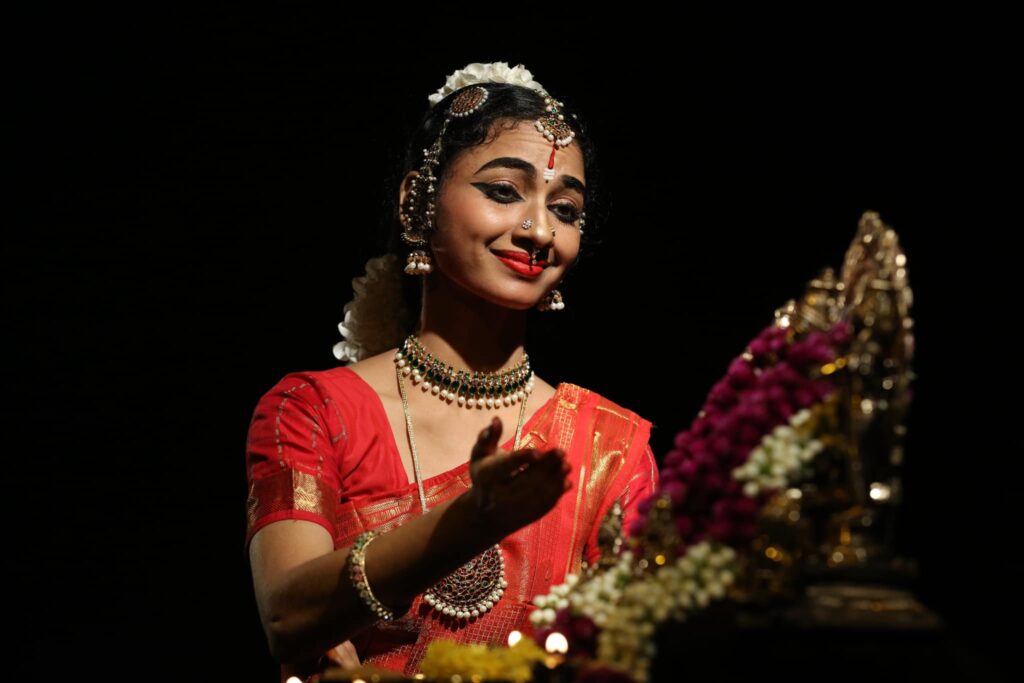
Five Jathis of Thala are played in five Gatis, each followed by the dancer’s reply in footwork. Another piece is called ‘Perani Natyam’, where the dancer dances on an inverted mud pot. One more peculiarity that I have observed is the element of Bhakti. As Mangudi Varadaraja was a Sreevidya Upasaka, the pieces reflect the Bhakti element very prominently.
You grew up in Chennai, a city abundant in dance and dancers. Was it a challenge for you, or do you believe it aided in your growth as a performer?
To be honest, I never felt it was a challenge. As you mentioned, there are abundant opportunities here, from the smallest temples to the grandest Sabhas. I’ve performed numerous times in various venues, both as part of a group and, in recent years, as a soloist. Criticisms were there, but I believe we shouldn’t be discouraged by them. I take them positively, and I believe it is a blessing to have been brought up in Chennai. Nowadays we have a very excited and core audience in other cities in India as well.
How do you compare the response of the audience and the level of connoisseurship in different cities inside and outside India?
I went abroad before Covid, and this is my first time in the UK, marking my first foreign tour after Covid. In my experience performing overseas, acceptance depends on the artiste, their popularity, and certainly, the effectiveness of the organizers. I am grateful for social media nowadays because the audiences are familiar with the artiste, and they come to watch with certain expectations. This is positive in many ways, although it’s not always entirely favorable, in my personal opinion. Overall, viewership is increasing, thanks to social media, which has significantly contributed to our widespread acceptance.
Sridevi Nrithyalaya has been actively involved in visual documentation, posting performances, and tutorial videos. Was this practice a part of your dance school before, or is it a recent trend, especially with the onset of the pandemic?
My guru was very keen on video documentation and posting our videos, well before the COVID era. She had a special interest in showcasing her students’ talent and always encouraged us to do so. There were numerous requests from regular audiences for such videos, which made her take this initiative forward. Consequently, we all now seriously engage in this practice.
Are there any other personalities that influenced you, aside from your Guru?
I find inspiration in various artists, with Guru Vempatti Chinnasathyam being one of my early influences, having witnessed his remarkable Kuchipudi performances through my mentor, Sheela Ma’am. Though I never met him personally, his work left me in awe. Leela Samson has also played a significant role in my development as a dancer, having mentored me on several occasions. Kishore Mosalikandi, a Kuchipudi artist, has provided valuable insights into performance nuances and choreography. Additionally, the dedication and creativity of my fellow artists have been a continual source of inspiration. I have a broad perspective when seeking inspiration from various sources.
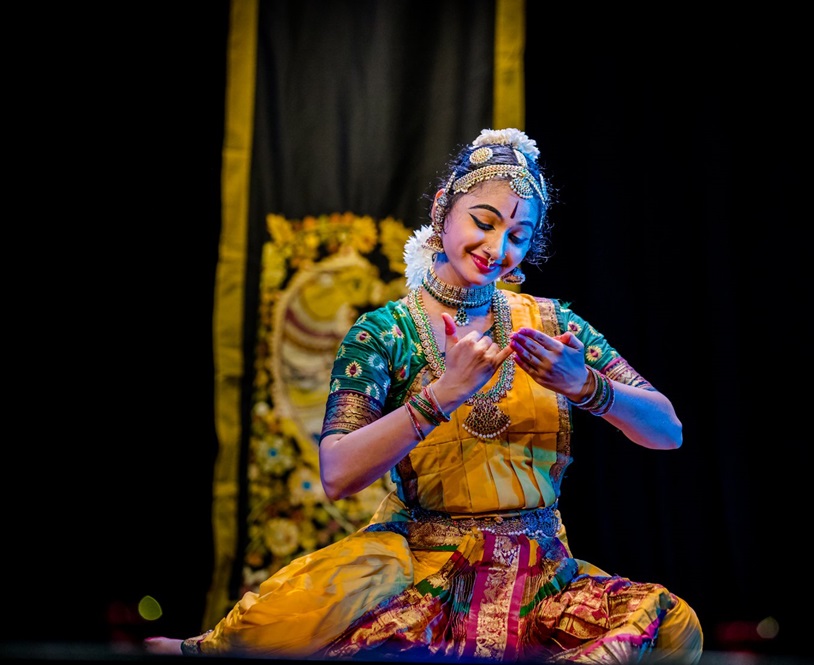
Can you share your experience as a choreographer, especially since you are showcasing your own work at the INDIKA festival? Some insights on your new choreography.
My teacher has choreographed eighteen dance dramas so far, and I have been a part of all those productions. This marks my first independent work, titled ‘Varadaraja Upasmahe’, which will be performed at the INDIKA festival. The dance drama revolves around Lord Varadaraja of Kancheepuram and presents various aspects of the grand temple festival Brahmotsavam. I gathered verses from Tamil Pasurams, Telugu Pothana Bhagavatham, and a few Sanskrit Shlokas, weaving them into a traditional Bharatanatyam Margam format. The performance is a fusion of several verses and kritis; it includes a Tyagaraja Kriti, and the Varnam and another piece, Gajendramoksham, have been tuned by Sreekanth Gopalakrishnan.
The Thillana composition is by Abhishek Chandrashekar. The thematic production portrays different aspects of the festivity and rituals of the Bhrahmotsavam, which I have personally experienced several times. This is an intricate subject. The festival always attracts a large crowd, and devotees become deeply emotional during certain aspects of the rituals, such as when they listen to the Pasurams or witness the Garudaseva.
What approach you have taken while presenting such a concept having a strong regional influence, coupled with its ritualistic and emotional significance, to a multicultural audience?
It’s a mix of emotions for me when I present such a concept abroad. I’m not sure how the audience will react, as they might not be very familiar with the Brahmotsavam for sure. To address this, I have prepared a flyer explaining who Varadaraja is, with some images. The announcements have been pre-recorded and will be presented with supporting visuals on screen. While I can’t fully convey the complete essence, I am ensuring that I do justice to the emotions embedded in the concept, by at least providing a glimpse of the grand event.
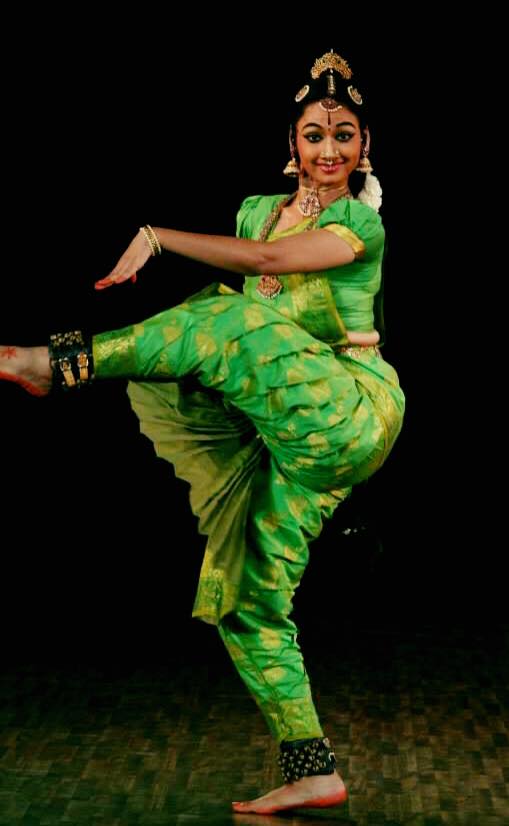
What are your other interests besides dancing? Heard that you have also ventured into poetry.
I enjoy reading and writing. I love literature, so I did my graduation in English Literature, later my Post Graduation in Dance. Poetry just happened over the course of the years. I have published an anthology of poems titled ‘Perspectives’. I believe reading helps me appreciate all forms of art. Reading and writing have always been a part of me, something I naturally do.
How has your dance academic helped you in your career? Do you think a dance degree helps one to grow in their performance skills?
My post-graduation in Dance provided me with additional theoretical insights about the art form, allowing me to delve deeper into it. An academic degree is not a must for being a performer. While it granted me the certificate and a wider understanding of the theory side, it was, of course, my dance training that proved more beneficial, giving me the confidence to enter the world of performance.
What brings you the most happiness: performing, teaching, choreographing, writing, or something else?
Performing definitely brings me more happiness and a sense of completion. There’s nothing like the thrill of being on stage, I would say. Teaching provides me with satisfaction, while writing gives me a sense of achievement. Choreography, or the act of creating, is like a vast ocean. I feel it as a ‘Tapas’. I’ve started to enjoy it as I’ve just embarked on this journey.

